Taking Shape on the Western
Bank of the Detroit River
Story by Matthew St. Amand
Photography courtesy Gordie Howe International Bridge Project
For almost a century, the Ambassador Bridge and the Detroit/Windsor Tunnel have been the main crossing points between Windsor and Detroit for truckers, commuters and other travelers. In the next few years, there will be another option: the Gordie Howe International Bridge.
In the background of Windsorites’ daily lives, this $4.5 billion, multi-year construction project has slowly come together on the western bank of the Detroit River. Progress has been steady on the bridge project.
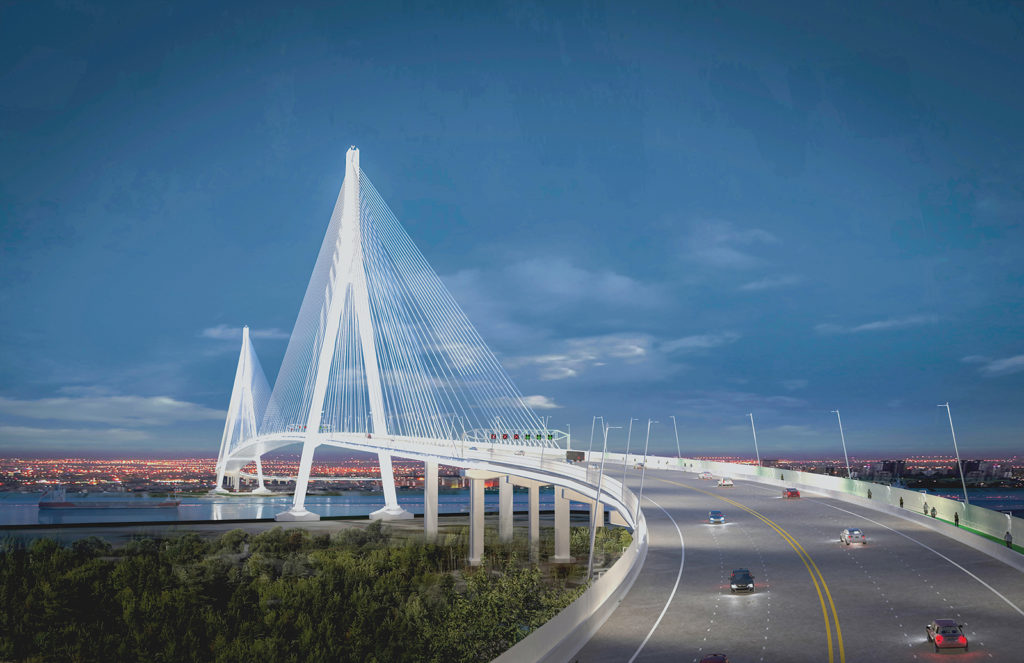
Recent drone flyover images captured by the bridge’s construction team documents the ongoing process of cable installation and offers a glimpse at how the first of these massive cables extend from the towers above to support the road deck below.
In local media, Tara Carson, communications director for the Windsor-Detroit Bridge Authority (WDBA)—which is overseeing construction—told local media: “The Gordie Howe International Bridge will include 216 stay cables—108 connecting each tower to the bridge and road deck when completed.” As of mid-May, 16 have been installed on the Canadian side and 20 of them installed on the U.S. side.
For those not versed in modern bridge construction, a stay cable is comprised of rope-like metal strands housed in a high-density polyethylene (HDPE) plastic pipe. Each of the bridge’s 216 cables is comprised of between 38 and 122 steel strands. The metal strands inside the pipe are stressed and anchored to two points: an anchor box inside the tower and an edge girder on the deck.
Crews began the installation process by craning these HDPE plastic pipes up to the road deck, which are welded together before individual cable strands are inserted in a highly technical and precise process.
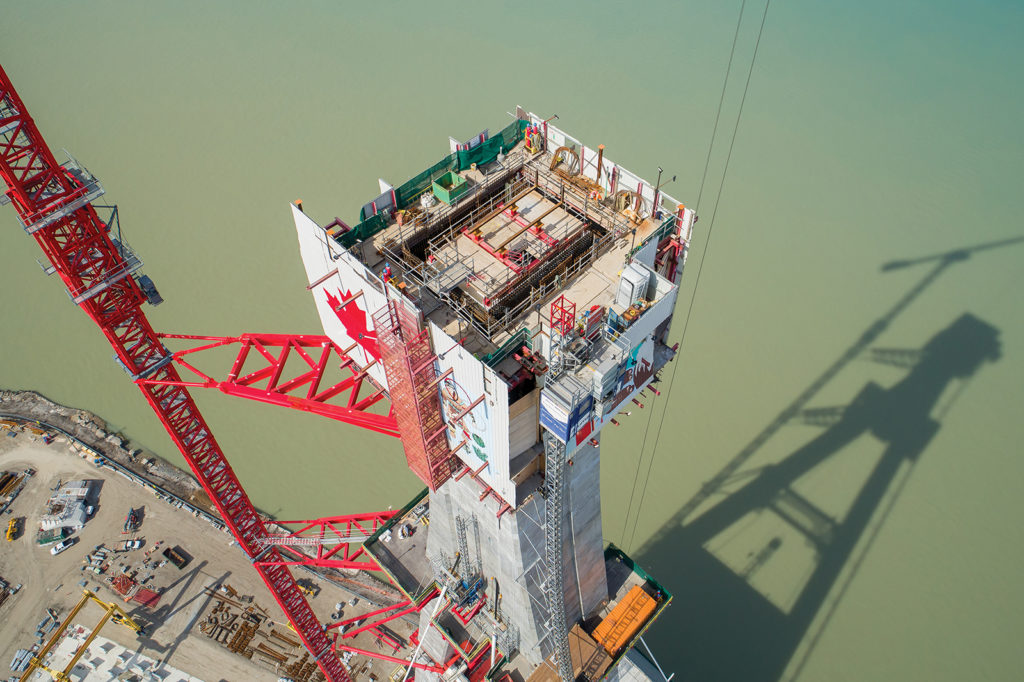
When completed, the cables will distribute the weight of the entire structure to the tower and maintain the stability and placement of the bridge deck. The towers and stay cables will be capable of supporting millions of pounds of weight.
The tower legs join together on the Canadian and U.S. sites and continue to climb as single pylons. They now stand over 190 metres and will continue to a height of 220 metres. It is anticipated the towers will reach their final heights in 2023.
Information provided by the communications team at the bridge project says: “Over 8,550 individuals have been oriented to work on the Gordie Howe International Bridge project in the U.S. and Canada, with 42 per cent of those individuals being local from the City of Detroit or Windsor-Essex. These include ironworkers, operating engineers, carpenters and millwrights, bricklayers, cement masons, electricians, plumbers and labourers… Additionally, over 485 apprentices and pre-apprentices have been engaged in the U.S. and Canada. Two hundred fifty local businesses in Windsor and Detroit have been engaged to provide goods or services to the project and more than 280 co-operative learning experiences have been provided on the project.”
At the Canadian Port of Entry, foundation work has been completed on the primary inspection lanes. Structural steel erection continues, and paving is underway. The toll booths continue to take form and work has begun on all buildings and canopy structures with the structures at various stages of construction.
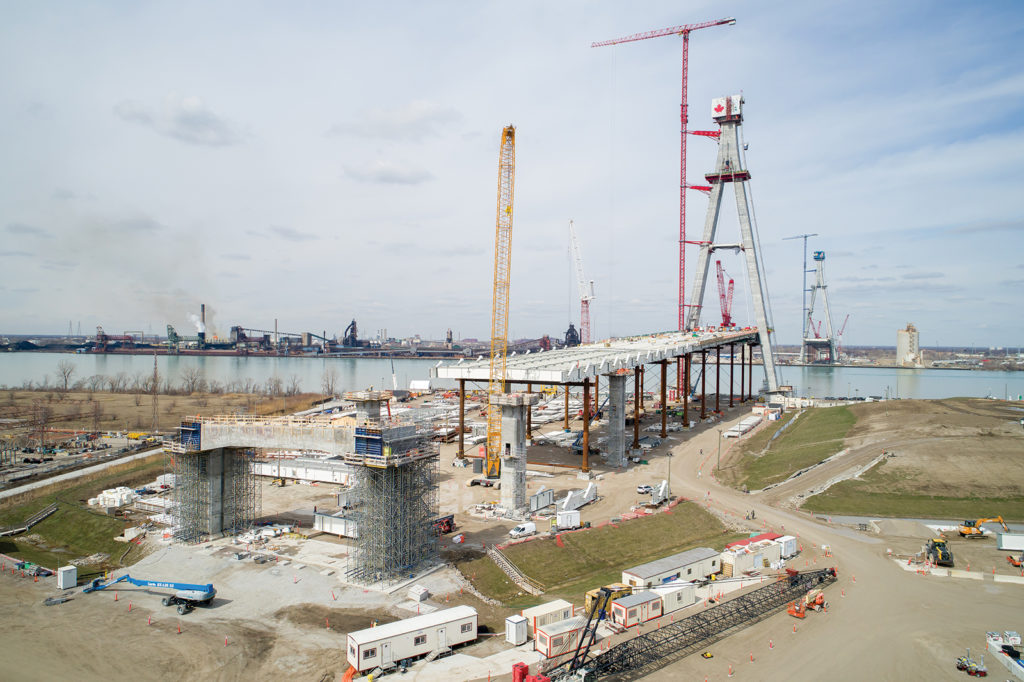
Aside from its grand profile in the landscape and interesting stats, the bridge will have a feature that should interest a great many people on both sides of the river: The Gordie Howe International Bridge will have a multi-use path for pedestrians and cyclists. It will be one lane that accommodates two-way traffic in either direction. Concrete barriers will separate vehicular traffic from pedestrians and cyclists on the bridge and dedicated processing areas at each Port of Entry will welcome them. Pedestrians and cyclists will not cross oncoming pathways and will be toll-free for users.
Representatives of the WDBA said they came to their decision to include this multi-use path following public consultation and feedback from both Canadian and American border protection agencies.
Once pedestrians and cyclists cross the bridge, will they just turn around and come back the way they came? The Gordie Howe International Bridge team is working with the City of Detroit to create pedestrian and cycling connections into adjacent road and trail networks in the city, including the Southwest Detroit section of the Joe Louis Greenway. Users of the bridge’s multi-use path will access local street connections on West Jefferson Avenue, adjacent to Historic Fort Wayne. From there, users can travel along the new West Jefferson Avenue multi-use path to connect to new cycling infrastructure via Green Street or Campbell Street which leads to bike lanes on Fort Street. Additional bike lanes have been integrated into the new road crossing bridges at Springwells, Green, Livernois and Clark Streets to connect the communities on the north and south sides of I-75.
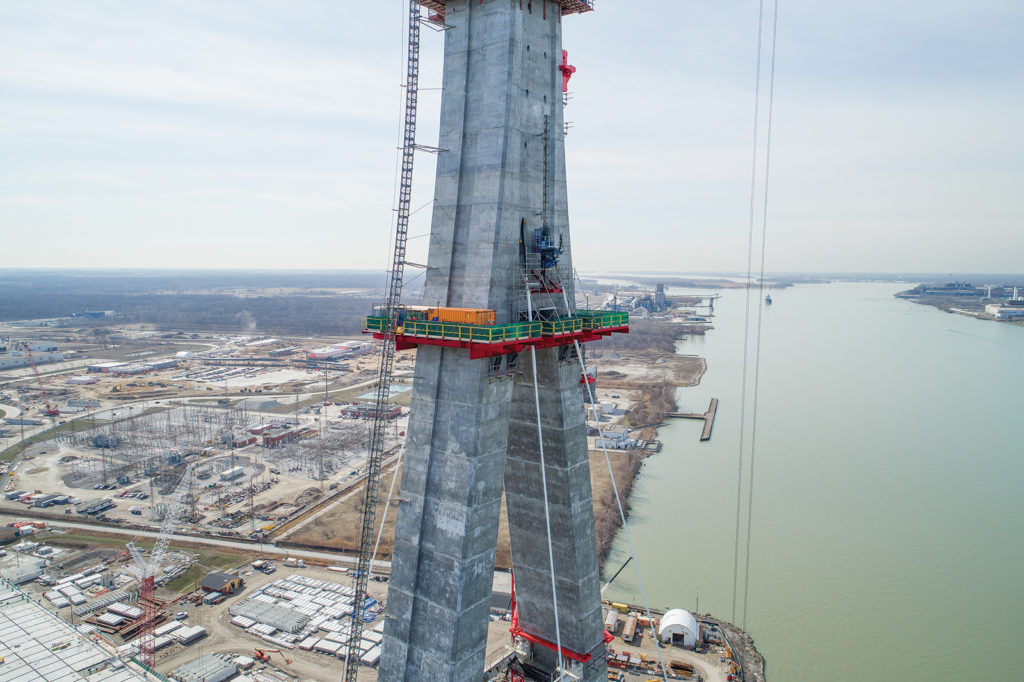
Not only did the bridge designers listen to the groups who lobbied for the multi-use path, they also took into consideration concerns from leading mental health organizations dedicated to suicide prevention. These organizations support the construction of physical barriers on bridges along with other passive measures. In response—and in keeping with their overall dedication to create meaningful and positive outcomes for the community—the WDBA incorporated means restriction interventions into the bridge’s design, including non-climbable fencing along the sides of the bridge, call boxes along the multi-use path and monitored video surveillance along the entire pathway.
When completed, the Gordie Howe International Bridge will break the record for the longest cable-stayed bridge in North America, with its clear span of 853 metres. This will nearly double the current record held by the Port Mann Bridge in British Columbia, which spans 470 metres over the Fraser River.
The Gordie Howe International Bridge is expected to enter service in 2025.
To keep up with the progress of construction and see updated photos/videos, visit gordiehoweinternationalbridge.com.


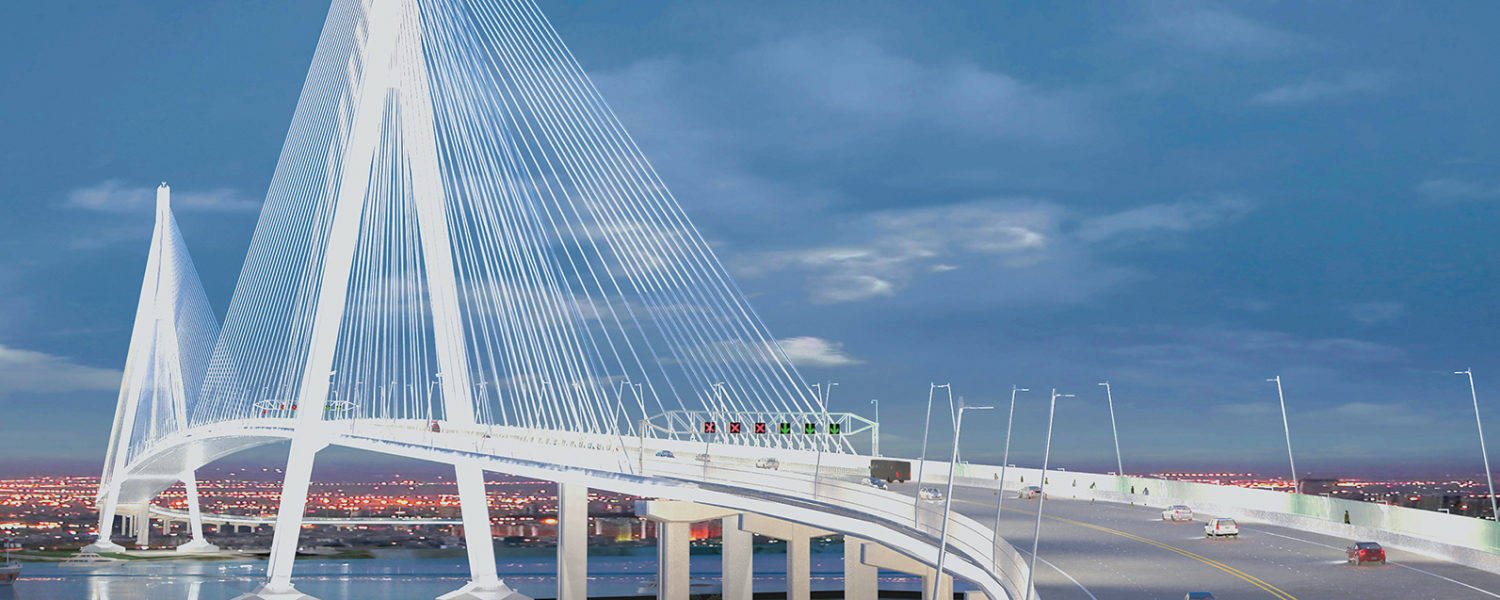

Add comment